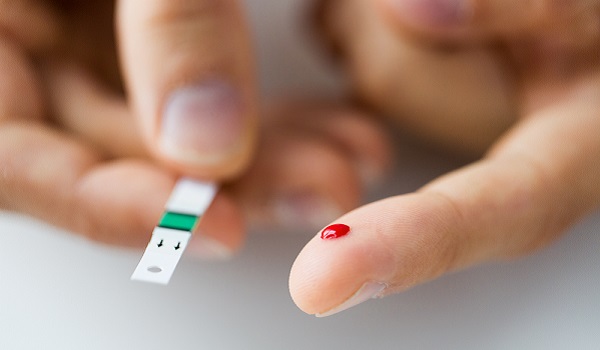What characterizes a
Diabetes Mellitus?
Diabetes mellitus, colloquially known as diabetes or diabetes, is a chronic metabolic disease characterized by elevated blood sugar levels (hyperglycaemia). In those affected, glucose (sugar) cannot enter the cells effectively, which leads to a build-up of sugar in the blood. These elevated blood sugar levels can lead to serious long-term health problems, including damage to blood vessels, nerves and organs. Diabetes Mellitus requires lifelong treatment and self-management to control blood glucose levels and prevent complications.
About the symptoms
More information
Important facts about diabetes mellitus
Symptoms of diabetes mellitus:
- Frequent urination (polyuria)
- Strong feeling of thirst (polydipsia)
- Increased hunger (polyphagia)
- Tiredness and general weakness
- Weight changes (weight loss in type 1 diabetes, weight gain in type 2 diabetes)
- Visual disturbances (blurred vision)
- Slow wound healing
- Itching, especially in the genital area
- Numbness or tingling in the hands and feet
Consequences of untreated or poorly controlled diabetes mellitus:
- Cardiovascular diseases (heart attack, stroke)
- Kidney problems (diabetic nephropathy)
- Eye complications (diabetic retinopathy, cataracts, glaucoma)
- Nerve damage (diabetic neuropathy)
- Foot problems (diabetic foot)
- Skin infections and poor wound healing
- Potency disorders (erectile dysfunction)
- Gastroparesis (delayed gastric emptying)
- Pregnancy complications (with gestational diabetes)
The most common forms of diabetes mellitus
Type 1 diabetes
An autoimmune disease in which the body's own immune system mistakenly attacks and destroys the insulin-producing cells (beta cells) in the pancreas. This impairs insulin production. The destruction of the beta cells results in an absolute insulin deficiency.
Type 1 diabetes usually occurs in childhood or adolescence, but can also occur in adults. The main reason for the occurrence is a genetic predisposition.
Type 2 diabetes
Type 2 diabetes usually occurs from the age of 40, but can also occur in younger people due to lifestyle factors. In this type, the disturbed blood sugar regulation lies in the body cells themselves. Initially, the pancreas produces sufficient insulin, but the cells become less sensitive to it (insulin resistance). This results in an insulin deficiency. The pancreas cannot produce enough insulin to meet demand or overproduces it, which leads to exhaustion in the long term.
Gestational diabetes
The form that occurs during pregnancy is caused by hormones that influence insulin action and increase blood sugar levels. Those affected do not have diabetes before pregnancy.
What risk factors can lead to type 2 diabetes?
In addition to genetic predisposition and the body’s own hormones, which are largely responsible for type 1 diabetes and gestational diabetes, certain environmental factors also play a role in the onset of type 2 diabetes over the course of a lifetime.
Unhealthy diet
Unhealthy diet
A diet high in sugar, processed foods and saturated fats increases the risk of diabetes.
Physical inactivity
Physical inactivity
Lack of exercise increases the risk of type 2 diabetes, as it impairs the cells' sensitivity to insulin.
Overweight and obesity
Overweight and obesity
Excess body fat promotes insulin resistance and increases the risk of diabetes.
Stress and lack of sleep
Stress and lack of sleep
Long-term emotional stress and chronic lack of sleep can lead to impaired glucose tolerance and insulin resistance.
Impaired glucose tolerance
Impaired glucose tolerance
The insulin effect is already impaired, but not yet to an extent that is sufficient for the diagnosis of diabetes.
How is a diabetic foot diagnosed?
Diabetes mellitus is usually diagnosed using various blood tests that measure the blood glucose level. The diagnostic procedures for the different types are similar. In addition to the following tests, further examinations and laboratory tests may be carried out to determine the type and severity of the diabetes, identify other possible complications and assess the state of health.
Fasting blood sugar test
The blood glucose level is measured after at least 8 hours of abstinence from food. A fasting blood glucose level of 126 milligrams per deciliter (mg/dL) or higher on two separate days is considered diagnostic for diabetes.
Oral Glucose Tolerance Test (OGTT)
Those affected must be sober for this. Then he will drink a sugar solution. Blood samples are taken at regular intervals to check the blood sugar level. A blood glucose value of 200 mg/dL or higher 2 hours after the sugar solution confirms the diagnosis of diabetes.
HbA1c test (long-term blood glucose test)
The HbA1c test measures the average blood glucose level over the last 2 to 3 months. An HbA1c value of 6.5% or higher indicates diabetes.
The blood glucose level is measured after at least 8 hours of abstinence from food. A fasting blood glucose level of 126 milligrams per deciliter (mg/dL) or higher on two separate days is considered diagnostic for diabetes.
Those affected must be sober for this. Then he will drink a sugar solution. Blood samples are taken at regular intervals to check the blood sugar level. A blood glucose value of 200 mg/dL or higher 2 hours after the sugar solution confirms the diagnosis of diabetes.
The HbA1c test measures the average blood glucose level over the last 2 to 3 months. An HbA1c value of 6.5% or higher indicates diabetes.
Important aids for the self-management of diabetes mellitus
Diabetes training
After being diagnosed with diabetes, those affected are often recommended to take part in diabetes training. This training provides them with comprehensive information about their disease, including symptoms, possible consequences and treatment options. The training also provides knowledge on how to deal with sudden complications such as hypoglycemia and what measures to take. It is a valuable opportunity for diabetics to improve their self-management and learn the necessary skills to successfully manage their condition.
Diabetes diary
A diabetes diary can be very helpful for regular blood glucose monitoring in order to get a better overview of the values. All measurement results are entered in the diary, as well as information about the intake of blood sugar tablets or insulin and, if applicable, blood pressure values. It is advisable to take the diary with you to medical appointments in order to optimize treatment.
Sources
Please note that all content provided regarding individual medical conditions, treatments, procedures, etc. is general information and may vary depending on the physician:in and individual case and initial situation.
For more detailed information, please always consult your doctor.
German Medical Association (BÄK), National Association of Statutory Health Insurance Physicians (KBV), Association of the Scientific Medical Societies in Germany (AWMF). National health care guideline: Therapy of type 2 diabetes (S3, in revision). AWMF register no.: nvl-001g. 2021.
Morbach S, Lobmann R, Eckhard M, Müller E, Reike H, Risse A et al. Diabetic Foot Syndrome. Diabetologist 2020; 16(1): 54-64.
Diabetes Information Service Munich: Consequential diseases of the feet.
www.diabinfo.deHerold G.: Internal Medicine. Self-published. 2014.
